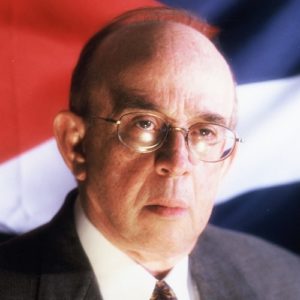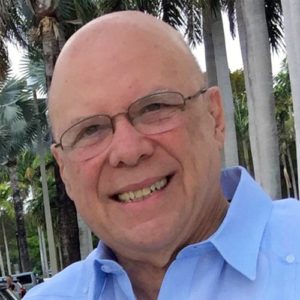CUBA INSIGHT
The Cuban Studies Institute Publications
Publications
Other Publications
Authors
Cuban Institutions and Groups

A town council (cabildo secular), and by extension a town hall and the area of the council’s jurisdiction – the

Sociedad Económica de Amigos del País
Two individuals in the late eighteen century were instrumental in shaping the intellectual climate of the island, Captain-General Don Luis

Consulado de Agricultura, Industria y Comercio y Junta de Fomento de La Habana, Real (1794-1894)
A government agency for promoting economic development. The consulado originated in medieval Spain as a guild of merchants in a

One of early 19th century Cuba’s most important secret societies, it was founded in 1821 by Cuban Creole leader José

Name given to the Slave conspiracy of 1843-1844, a climax to successive waves of slave revolts throughout Cuba in the

Spanish institution brought to the New World to deal with the Indians, groups of whom would be assigned to an

Institution founded in Old Havana in 1818 as an art and craftsmanship school by the Sociedad Económica de Amigos del

Real Colegio y Seminario de San Carlos
Founded in Old Havana in 1773 by Bishop José de Hechavarría, as the Real and Consular Seminario, to prepare sons

Real Compañía de Comercio de La Habana
Trading company with Cuban and Spanish shareholders, created December 18, 1740, to ensure that Cuban tobacco would be exported exclusively

The movement for reform (reformismo) in Cuba, began in the early 19th century, received new impetus by mid-century. The drive

The reform commission, created by a Spanish royal decree of November 25, 1865, of 12 Creole and 4 Spanish-born members,

Partido Revolucionario Cubano (P.R.C.)
The Cuban Revolutionary Party was conceived from the set of resolutions or bases that evolved out of an exile meeting

Founded in 1878 as the Partido Liberal, it advocated home rule for Cuba (Autonomismo) and in 1881 became known as

Weekly four-page newspaper that succeeded the original Gaceta de la Habana from October 24, 1790. Founded by Governor Luis de

AGRUPACIÓN INDEPENDIENTE DE COLOR
Organized in the early 1900s by a group of radical Blacks unhappy with their lack of political opportunities, the “Independent

Cuban sentiment in favor of the abolition of slavery first became significant in the 1850s. Many of the larger planters

ASAMBLEA DE REPRESENTANTES DEL EJĖRCITO CUBANO
The “Cuban Assembly” composed of delegates elected by 31 corps of the Army of Liberation and summoned by the Council

ASOCIACIÓN COMUNISTA DE LA HABANA
Founded by Carlos Baliño in the early 1920s, the Communist Association of Havana was one of the various communist groups

ASOCIACIÓN DE LOS VETERANOS Y PATRIOTAS
An opposition movement against President Alfredo Zayas consisting of veterans of the wars of Cuba’s independence struggle. Beginning as a

A clandestine revolutionary organization founded in 1934 by Antonio Guiteras Holmes, interior minister in the Grau San Martín administration, which
Recent Publications
We Recommend You
Cuban Institutions and Groups

Directorio Revolucionario Estudiantil (DRE)
A group of University of Havana students formed in1960 by Juan Manuel Salvat’s Trinchera groups as a wing in the university of

CONFEDERACIÓN DE TRABAJADORES DE CUBA (CTC)
A union (central) of trade unions established in January 1939 through the influence of Fulgencio Batista, serving as an umbrella

COMMITTEES FOR THE DEFENSE OF THE REVOLUTION
Block-to-block vigilante committees established in September 1960 to ensure internal security and public control, and counter the increased anti-government activity

INSTITUTO NACIONAL DE LA REFORMA AGRARIA (INRA)
The National Institute for Agrarian Reform was established May 17, 1959, to carry out the provisions of the 1959 agrarian

ORGANIZACIONES REVOLUCIONARIAS INTEGRADAS (ORI)
A body created in 1961 by merging the Partido Socialista Popular, the Movimiento Veintiseis de Julio and the Directorio Revolucionario. The objective was to

FREEMASONRY. Rationalism, in the form of Freemasonry, was a legacy of the British occupation of 1763 and was reinforced by the

BOHEMIA. An illustrated magazine, founded by Miguel Ángel Quevedo in Havana in 1908, which became Cuba’s most influential weekly. In the 1940s and

Orígenes, A “Revista de arte y literatura” founded by José Lezama Lima, which published the major literary figures of the

ASAMBLEA NACIONAL DEL PODER POPULAR
Under the Constitutions of 1976, the “National Assembly of the People’s Power” was called into session for its first meeting

ASOCIACIÓN NACIONAL DE AGRICULTORES PEQUEÑOS (ANAP)
The National Association of Small Farmers is led by a member of the Central Committee of the Partido Comunista de
Other Publications
Recent Publications
We Recommend you
Authors








